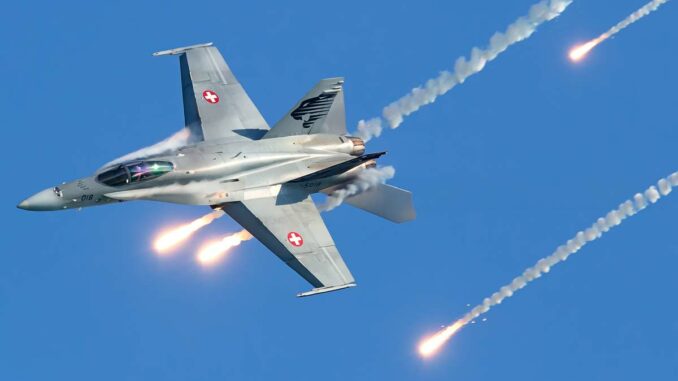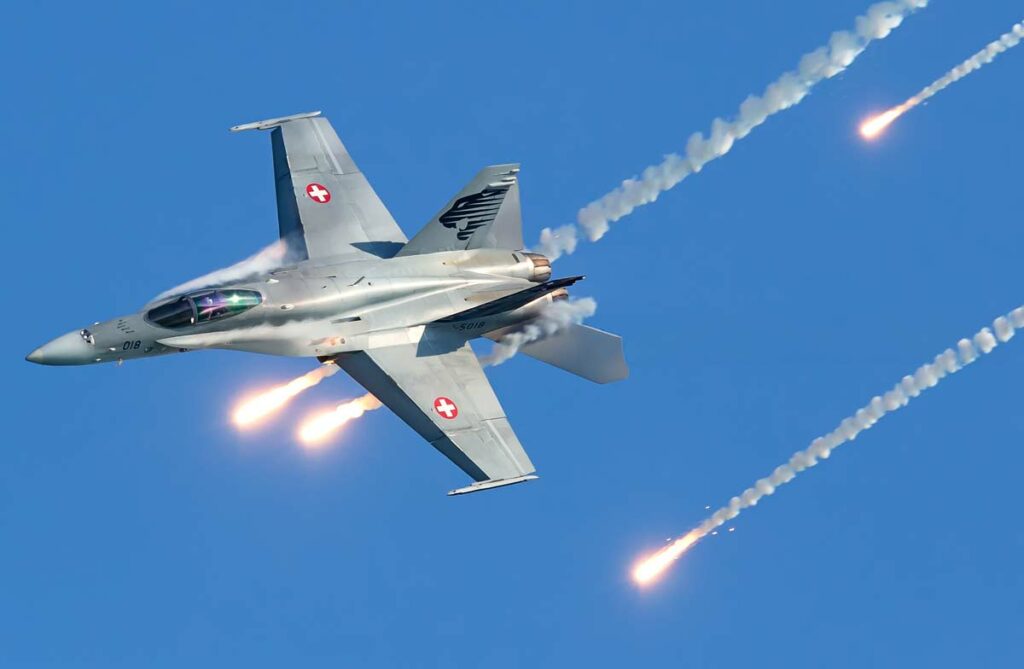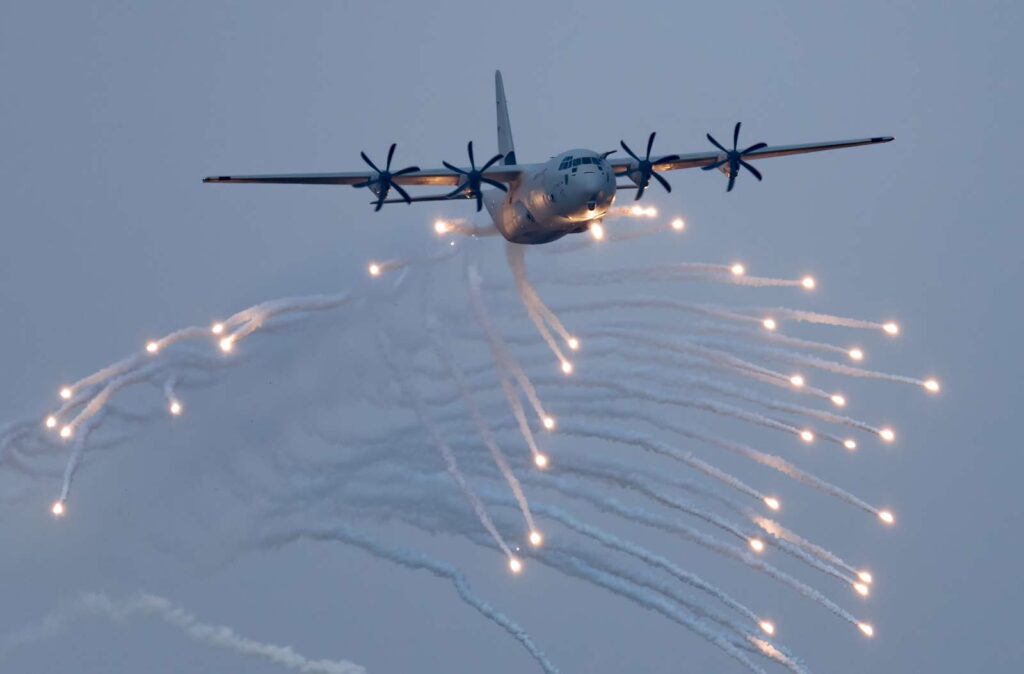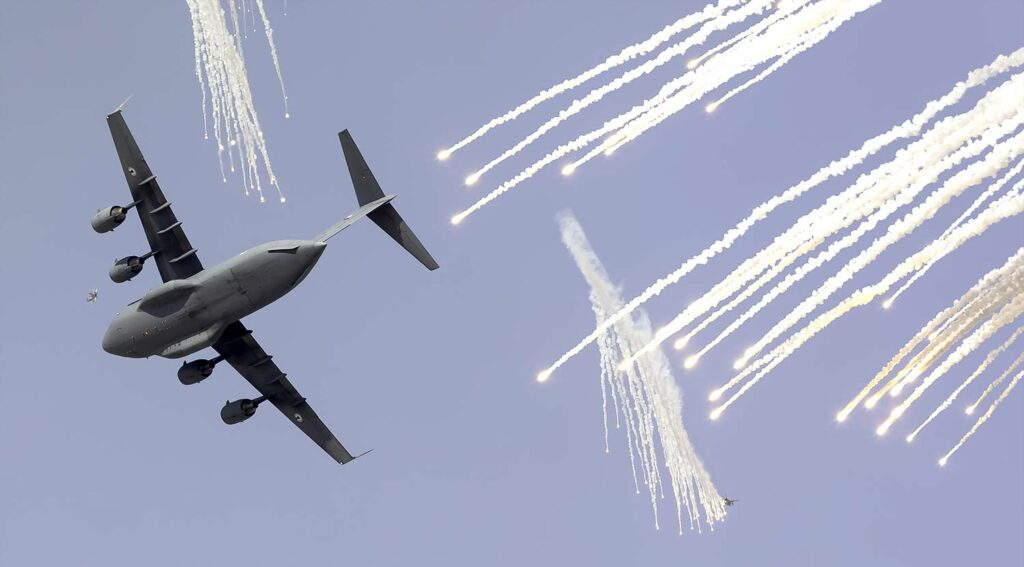
Discover the technical operation of fighter jet flares and their use on other types of aircraft. Detailed explanations and examples.
In brief
Fighter jet flares are systems designed to protect the aircraft against threats such as radar-guided or infrared-guided missiles. These systems include decoys, jammers, and infrared countermeasures. Their operation relies on advanced technologies and strategies to deceive or neutralize enemy missile guidance systems. Other types of aircraft, such as military transport planes and airliners, can also be equipped with flares for protection.

Fighter Jet Flares
Modern fighter jets are often equipped with various flare systems to protect against aerial threats. Flares are essential for ensuring the survival of pilots and aircraft in combat. They primarily include decoys, jammers, and infrared countermeasures. Each type of flare is designed to address specific threats, such as radar-guided or infrared-guided missiles.
Decoys, for example, are used to deceive missile guidance systems by creating false targets. Jammers interfere with radar signals to prevent missiles from locking onto their targets. Infrared countermeasures disperse heat to mask the aircraft’s thermal signature. These systems are integrated into a comprehensive defense strategy to maximize protection in combat situations.
Decoys: Deceiving Missiles
Decoys, or “chaff” and “flares,” are devices used to thwart radar-guided and infrared-guided missiles. Chaff consists of fine metal fibers released by the aircraft to create a cloud of radar reflectors. This cloud disrupts the missile’s radar signal, causing it to target the cloud instead of the aircraft. Flares, on the other hand, are pyrotechnic devices that emit intense heat. They are used to attract infrared-guided missiles, causing them to follow the flares instead of the aircraft.
Decoys are often deployed automatically by the aircraft’s flare management system, which detects threats and launches the decoys at the optimal moment. For example, an F-16 fighter jet can carry up to 60 flares and 90 chaffs, with each deployment calibrated to maximize the chances of diverting the enemy missile.
Jammers: Interfering with Radars
Jammers are electronic systems that emit signals to disrupt enemy radars. They can either saturate the radar with noise signals or send deceptive signals to create fake targets. Jammers are particularly effective against missile radar guidance systems and surveillance radars.
Jammers can be mounted internally or on external pods under the aircraft’s wings. A notable example is the AN/ALQ-131 jamming pod, used by American fighter jets to protect against radar threats. This system emits signals at different frequencies to confuse and deceive enemy radars, increasing the aircraft’s survival chances.
Infrared Countermeasures: Masking Heat
Infrared countermeasures (IRCM) are designed to counter infrared-guided missiles, which track the heat emitted by the aircraft’s engines. IRCMs can include high-energy lasers that disrupt the missile’s infrared sensor or devices that modulate the aircraft’s thermal signature to make it less detectable.
An example of an IRCM system is the AN/AAQ-24 Nemesis, which uses lasers to blind the infrared sensors of missiles. This system can detect an approaching missile and target its sensor with a laser beam, disrupting the missile’s guidance and increasing the chances of evasion.

Other Aircraft Equipped with Flares
Although flares are primarily associated with fighter jets, other types of aircraft are also equipped with them. Military transport planes, such as the C-130 Hercules, use flares to protect troops and equipment in conflict zones. These aircraft are often equipped with decoys and jammers to evade surface-to-air missiles.
Airliners, although less frequently equipped, can also benefit from flares, especially in high-risk areas. For example, some aircraft in the American presidential fleet, like Air Force One, have flare systems to ensure the president’s safety.
Advantages and Disadvantages of Flares
Flares offer significant advantages in terms of survival and protection for fighter jets. They increase the chances of evading sophisticated threats, thus reducing combat losses. Additionally, the integration of advanced systems, such as jammers and IRCMs, allows countering a wide range of threats.
However, flares also have disadvantages. Their development and integration are expensive, with jamming systems potentially costing millions of euros. Furthermore, the use of decoys and jammers can be limited by the number of devices carried, and their effectiveness can diminish against advanced enemy countermeasures.
Strategic and Operational Consequences
The use of flares has important strategic implications. It helps maintain air superiority by protecting airborne assets against modern threats. Furthermore, flares influence military doctrines, prompting adversaries to develop more sophisticated weapon systems to overcome these defenses.
Operationally, flares enhance the air forces’ ability to operate in hostile environments. They enable more daring missions, such as deep strikes and reconnaissance in enemy territory. Moreover, they boost pilots’ and commanders’ confidence in their ability to conduct operations with reduced risk.

Flares on fighter jets are essential components of modern air defense. Their ability to deceive, jam, and mask against aerial threats significantly increases the chances of survival in combat. These systems, though costly and technically complex, play a crucial role in military strategy and operations. Their continued development is vital for maintaining a technological and operational edge against increasingly sophisticated adversaries.
War Wings Daily is an independant magazine.